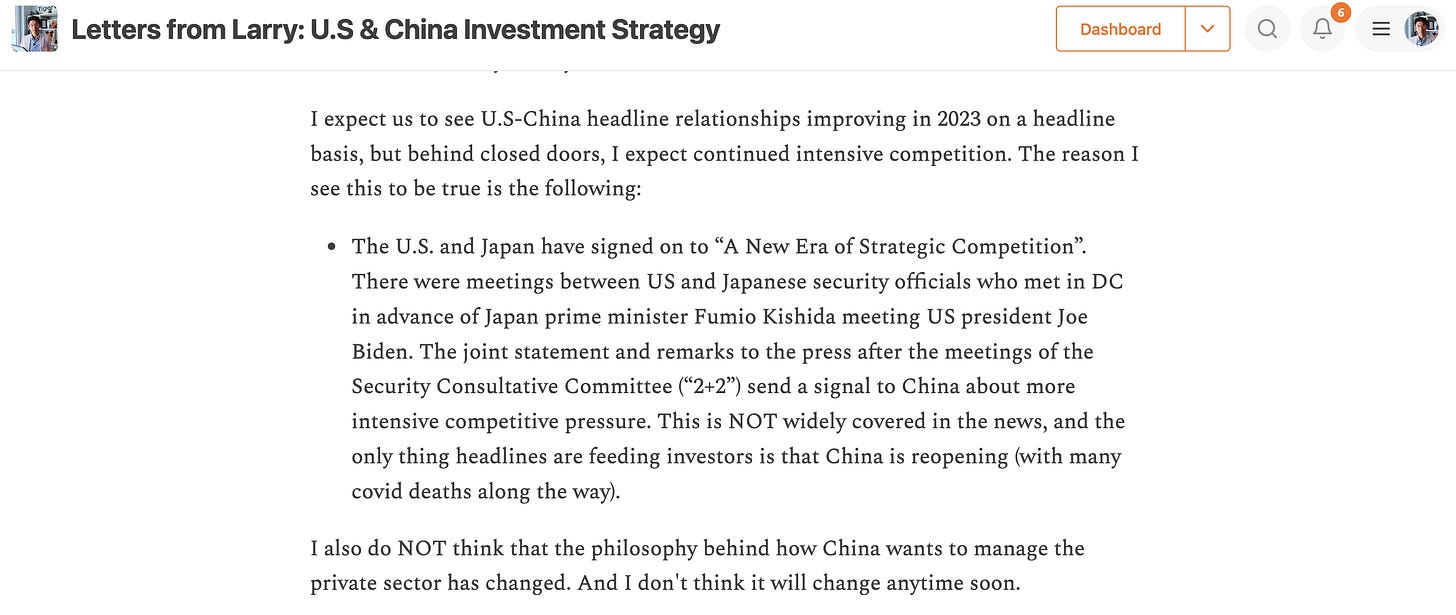Geopolitics China Investment Strategy & Insights: Opportunity and Danger awaits from the U.S. - China Flareups
China Investment Strategy: Premium Note to Members (With thoughtful and comprehensive preview)

Members,
I hope everyone had a refreshing long weekend here in the U.S. I wanted to provide members with an additional Strategy note since I always get many messages saying that you are so excited to read my next update.

My members inside my private Community within Substack and Patreon (equivalent service to Substack) is comprised of approximately 60% of folks from the U.S. and the other 40% from Europe and Asia-Pacific (namely Singapore, HK, and Australia).
Folks from outside the U.S. tend to closely follow me for my views on China, and this note is going to be focused on geopolitics - specifically, the latest observations on U.S. - China relations and what it means for markets.
Now, if you are strictly a U.S. based investor, you may be wondering why the U.S. & China relationship is so important.
Here are a few facts that are important to know as depicted in the charts below:
The S&P 500 companies derives 40% of aggregate revenue exposure Internationally, a substantial portion of which is from China
Tech, Communication Services, Materials, and Consumer Staples derive a big portion of their sector revenues outside of the U.S. - with Tech firms generating almost 60% of their aggregate revenues internationally
Based a number of different estimates, China’s contribution to global GDP can range from one-fifth to one-third.
While these graphics just scratch the surface, what this means is that China’s domestic business environment and its relationship with the U.S. is very important for the following investor groups:
Investors with Semiconductor exposure
Investors with tech-hardware based exposure (think Apple and its supply chain)
Investors in QQQ and Nasdaq related names
Investors in China ADRs (obviously).
Investors in EV.
Investors who own Consumer-related names that have large dependence on China’s supply chain or China’s consumer market
At the time of this writing, I have the opinion that the U.S. - China relationship is about to take the next step in the wrong direction.
I wrote about U.S and China relations offering a false illusion of recovery back in mid-January in a premium note as you can see here:

About 30% of my methodology to reduce BABA/China back in late January was geopolitically driven. Another 30% was technical overheating, and the remaining 40% being a reset in fundamental expectations given that we still needed to see more support from the PBOC and the Party before the consumer sentiment stabilizes.
In this note, I will help you understand the implications of the current geopolitical environment and assess the direction of China stocks and U.S. sensitive names to China based on the most up-to-date information and analysis.
The goal of this note is to help inform you of global geopolitics currently in motion and help investors with global exposure to properly assess the environment we are in and the one we are heading towards (which is of course, particular relevance to you).





